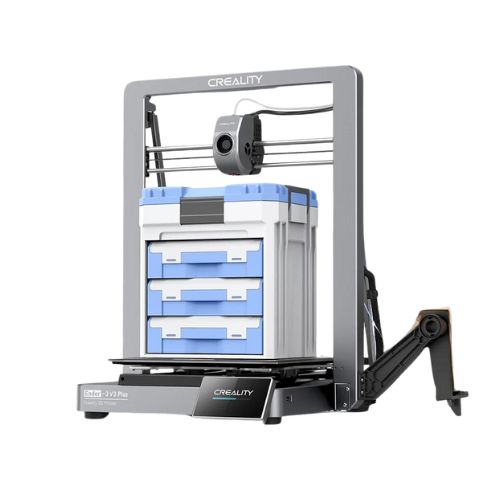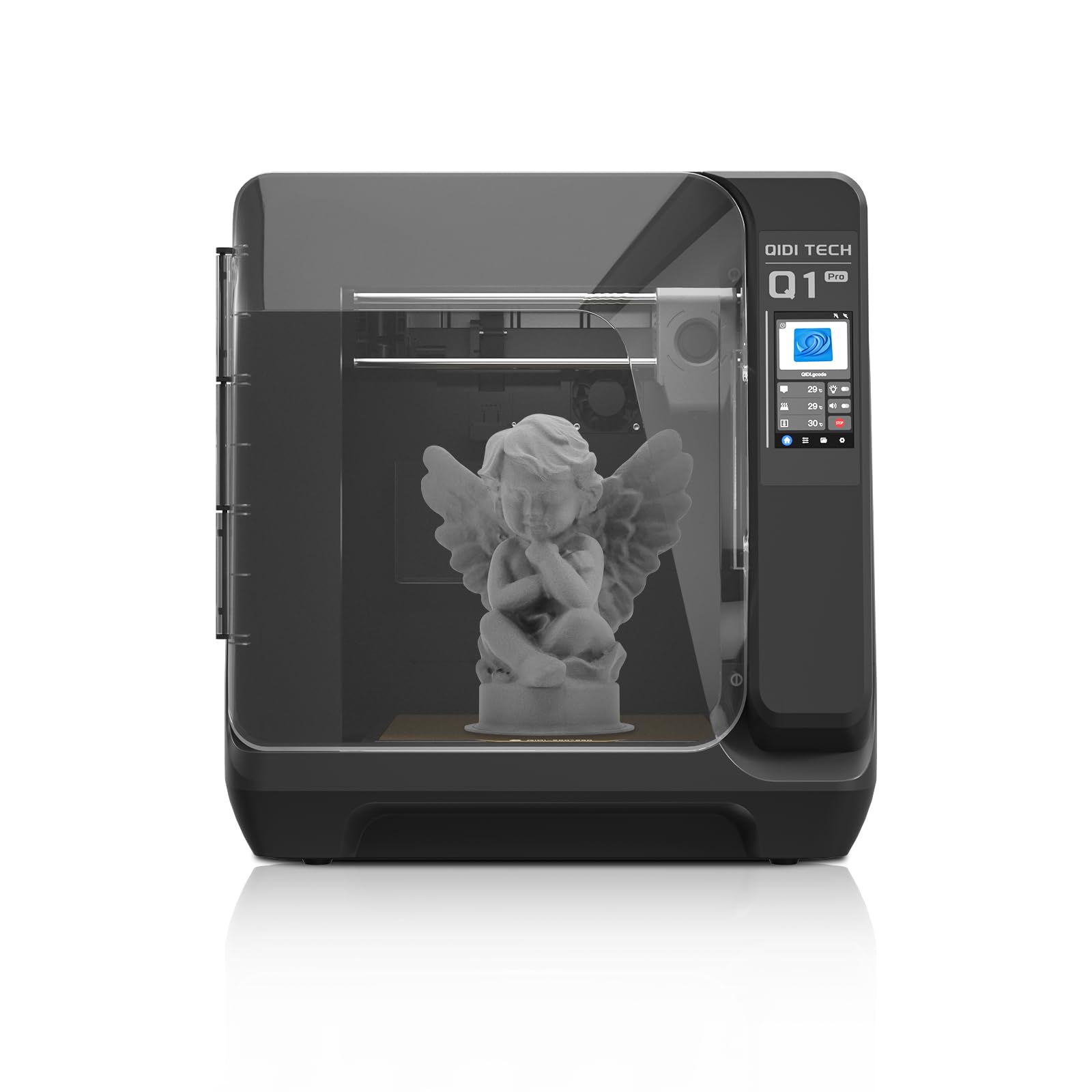Compare Ender 3 V3 Plus vs Q1 PRO
Comparison between the best 3D printers
Choose the best 3D printer at the best price. The cheapest 3D printers are here.
Buy a 3D printer here with 3D Fila.
 |
 |
|
| Model | Ender 3 V3 Plus |
Q1 PRO[BUY Q1 PRO] |
| Printing Material | Filament | Filament |
| Buy Filament for Creality Ender 3 V3 Plus | Buy Filament forQIDI Q1 PRO | |
| Estimated price | $479,00 | $449,00 |
| Manufacturer | Creality | QIDI |
| Release Year | 2024 | 2024 |
| Print Volume [mm] | 300x300x330 | 245x245x245 |
| Printer Size [mm] | 410x445x577 | 467x477x489 |
| Weight [kg] | 11,5 | 20 |
| Power Loss Recovery | YES | YES |
| Enclosed printer | NO | YES |
| Bed Leveling | Automatic | Automatic |
| Filament End Sensor | YES | YES |
| Bed type | Heated | Heated |
| Power supply system | Direct Drive | Direct Drive |
| Standard nozzle | 0,4 | 0,4 |
| Maximum Nozzle Temperature [°C] | 300 | 350 |
| Maximum Bed Temperature [°C] | 100 | 120 |
| Maximum printing speed [mm/s] | 600 | 600 |
| Filament holder | YES | YES |
| Camera for supervision | NO | NO |
| Recommended filaments | PLA, TPU(95A), PETG, ABS, PLA-CF, PETG-CF, CR-carbon | PLA、ABS、ASA、PETG、TPU、PC、PA、PA-CF、PET-CF、PAHT-CF etc. |
| Recommended slicers | Bambu Studio, Super Slicer, Cura, Prusa Slicer, Orca Slicer, Creality Print | QIDI Slicer/Cura/Simplify 3D/ORCA/PRUSA Slicer |
| Maximum Resolution [mm] | 0,1 | 0,1 |
| Processor | Cortex-A53,64-bit Processor | |
| Display | Touchscreen 4,3'' | Touchscreen 4,3'' |
| Power Supply | 350 W | 350 W |
| Connectivity | Wifi, Bambu bus, Cartão SD | WiFi/USB Flash Drive/Ethernet Cable |
| Operating systems | Windows, Linux, Macbook | Windows, Linux, Macbook |
| Date of registration in the system | 2024-05-10 | 2024-07-09 |
| Release date | 2024 | 2024 |
| Extra features | The Ender 3 V3 Plus incorporates significant advancements in 3D printing, featuring a build volume of 300300330mm. It features a Creality operating system based on Klipper, which supports advanced functions such as linear advance and input shaping, and allows precise adjustments through root access or expert mode. The CoreXZ motion system allows a printing speed of up to 600mm/s, with an acceleration of up to 20000mm/s². Equipped with a flexible build plate and a quick-change nozzle with a hardened steel tip, the printer offers simplified maintenance and increased durability. Additionally, the high-speed direct drive technology of the extruder, together with an automatic leveling system and filament end sensors, raise the standard for reliability and efficiency. Compatible with a variety of filaments, including PLA and PETG, the Ender 3 V3 Plus is a robust choice for 3D printing enthusiasts and professionals. | The QIDI Q1 Pro 3D printer stands out for its Core XY structure and heating chambers that reach up to 60ºC, ideal for advanced materials such as ABS and Nylon. It features Klipper firmware, an automatic leveling system, a high-flow extruder with a double metal nozzle and a hotend that reaches 350ºC. It offers connectivity via Wi-Fi, USB and Ethernet, as well as a 1080p camera for remote monitoring and an intuitive touchscreen for easy operation. |
| Support for multiple colors and materials (AMS and CFS) | NO | NO |
Notes * |
||
| Cost-benefit | 7 / 10 | 8 / 10 |
| Hardware | 3.2 / 10 | 4.8 / 10 |
| Tela | . | . |
| Print volume | 4 / 10 | 3 / 10 |
| Performance | 5 / 10 | 5 / 10 |
| [BUY Q1 PRO] |
Conclusion |
| In comparing the Ender 3 V3 Plus and the QIDI Q1 Pro, both 3D printers showcase significant capabilities for different user needs, each with its own unique advantages. The **Ender 3 V3 Plus** provides a larger print volume, making it ideal for users who require more substantial builds. Its robust design and advanced features, such as the CoreXZ motion system and high-speed printing capabilities, contribute to its reputation as a reliable choice for both enthusiasts and professionals. Moreover, its compatibility with a variety of filaments adds to its versatility in printing applications. On the other hand, the **QIDI Q1 Pro** features a more sophisticated Core XY structure, which is particularly advantageous for printing with advanced materials like ABS and Nylon, given its ability to heat up to 60ºC in the chamber. With a higher maximum nozzle temperature, it allows for a broader range of filament options. Additionally, its connectivity options are more varied, including Ethernet in addition to Wi-Fi and USB, along with a camera for remote monitoring that enhances user experience by allowing oversight of prints. When considering price, both printers offer competitive features for their respective costs, making them similarly attractive in terms of cost-benefit analysis. However, users looking for larger build volumes and advanced printing speed might prefer the Ender 3 V3 Plus, while those prioritizing material versatility and a compact, enclosed design might lean towards the QIDI Q1 Pro. In conclusion, the ideal choice between the two models ultimately depends on the specific needs and priorities of the user, such as print size versus material capability, as well as the importance of additional features like connectivity and monitoring options. Both models offer solid performance and a good cost-benefit ratio, ensuring satisfaction for diverse 3D printing projects. |

